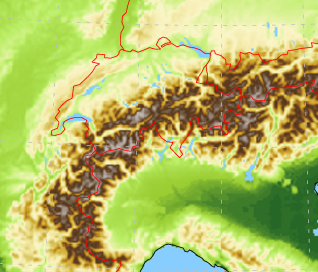
Weather forecasting to keep the population safe
As weather forecasts are becoming increasingly detailed, data volumes are increasing as well, demanding high-speed connectivity and supercomputing power.
In Switzerland, the Federal Office of Meteorology and Climatology (MeteoSwiss) is currently installing a new forecasting model called COSMO-NExT. The COSMO-NExT model has won the Swiss ICT Award 2016, and among other things it reduces the grid box size, i.e. the distance between topographical data points, from two kilometres to just one.
However, this increased resolution also means an increase in data volumes. The data are handled by graphics processors 40 times faster than normal CPUs. This is a world first for a national weather service. The computers are located at the Swiss National Supercomputing Centre CSCS in Lugano and connected via SWITCHlan, Switzerland’s high-speed research and education network.
Availability
“The availability and performance of SWITCHlan is vital for us. We need to be able to send large volumes of data to our supercomputer in Lugano reliably,” explains Martin Schäfer, Head of Information and Communication Technology at MeteoSwiss.
“Availability is essential, especially for flight weather around the airport in Kloten. Some of the data we rely on is sent via the Internet. Being able to react quickly and send out warnings is particularly important in cases of ice, storms and lightning, when the weather situation changes rapidly, so we need a fast and reliable way to receive the relevant information,” says Schäfer.
MeteoSwiss is tasked with warning the population about extreme weather. Every single person living in Switzerland thus benefits from detailed weather forecasts that can also be consulted on the move through a smartphone app – when a storm is moving in, for example, or when someone is planning a hike in the mountains.
At the same time, reliable weather simulations are also needed for statistically improbable events such as nuclear accidents.
MeteoSwiss has another important remit in terms of research in the fields of climatology and meteorology. Direct access to the academic network is therefore an additional advantage that SWITCHlan offers with regard to collaborating with the universities.
International collaboration
Since weather and climate are both global in scope, MeteoSwiss also takes part in cross-border collaborations and shares data internationally. A dedicated network like SWITCHlan with a high level of availability, stability, security, and performance is essential to this cross-border collaboration.
Thanks to a redundant fibre-optic network, SWITCHlan offers high levels of availability and supports bandwidths up to 100 gigabits per second, as much as 100 times more than conventional networks. The network is connected to the European research network GÉANT, enabling high-bandwidth links to other research and university locations throughout Europe and overseas.
For more information please contact our contributor(s):

